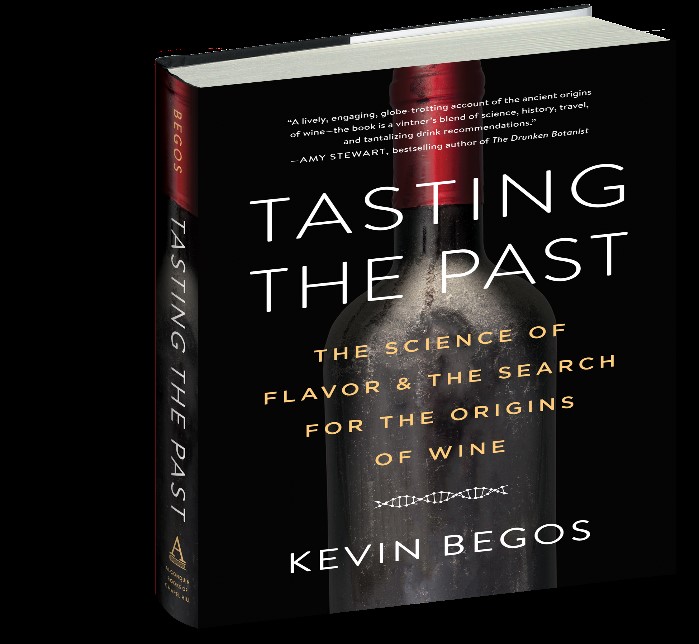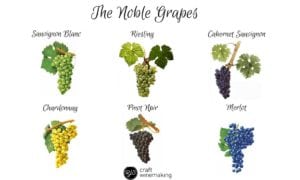
Kevin Begos: Wine links past to present
“Eat, drink and be merry, for everything else is not worth that.” (Inscription on tomb of Hittite king, 1400 BC) – for the love of wine.
Kevin Begos earned his creds as an AP science correspondent and seems to have found his way to the sweeter side of life in a hotel room in Amman, Jordan, where, thirsty for a beverage, he turned to his mini-bar and opened a small bottle of Cremisan, an obscure grape varietal that captured his taste buds and his imagination.
Searching for original wine grapes that have retreated to small vineyards in obscure locations or have totally disappeared from the landscape may have also been inspired by a book he reviewed in 2016 and written by Alice Feiring, “For the Love of Wine: My Odyssey Through the World’s Most Ancient Wine Culture.”
Whatever his motivation, Begos has spent his time and committed resources to a research-based document that helps everyone with even the slightest bit of interest in discovering the DNA of the wines in their glass onto a path of discovery and enlightened understanding of why the most popular wines on the shelves of wine shops, supermarkets and restaurant menus are dominated by what are considered “noble grapes.” The author seduces us into his search for the DNA or wine and grapes by asking the question: Where did the indigenous grapes of the world go? Why have they disappeared?

Wine Linked to History
Research suggests that the wine in our glass has taken an 8000-year journey that started in the Caucasus region (between Iran and eastern Turkey) although a confirmed report implies that wine was actually produced 6000 years ago, in Armenia, for ceremonial purposes.
In his quest for the first grape that morphed into wine, Begos conferred with scientists, historians and wine makers. He questioned everything and everyone and his inquiries covered grape DNA, original vineyard locations (he “thinks” he found one owned by Leonardo Da Vinci), and winemakers who are currently “discovering” the merits of clay amphorae for fermentation.

Begos’s research brought him to the Babylonian Code of Hammurabi, where references are made to wine and women. One section identifies a priestess who left a temple to drink, and her punishment was death. Another mention finds that, “If a tavern-keeper (feminine) does not accept corn according to gross weight in payment of drink, but takes money, and price of the drink is less than that of the corn, she shall be convicted and thrown into the water.”
During this same period, boys were not permitted to taste wine until they were 18 and then only in moderation – until the age of 30 (Plato). No one on a campaign was permitted to drink wine, magistrates could not drink during their year of office, and pilots of vessels or judges on duty or anyone with the responsibility for taking care of children could taste wine unless it was medicinal reasons. Rabbis through the 3rd – 5th centuries discussed how to determine if someone was “tipsy” and how long it takes to walk off a “bender.”
Against the Tide
We are reminded in Tasting the Past, that many grape varieties have disappeared from the global landscape. Some grapes became extinct due to religious or military events that halted or destroyed viniculture for years, decades and longer. Other ancient grape varieties vanished because of marketing efforts by private sector interests when corporate executives determined that narrowing the wine selections made for a more efficient and financially profitable industry. Influenced by corporate interests, governments frequently “persuaded” farmers to pull grapes from their terroir, offering financial incentives to plant the “noble grape” varieties rather than the grapes indigenous to the region.
The result of these public/private efforts has pushed the global wine industry toward a monoculture, where local grape varieties are deleted in favor of more immediately profitable mass-market selections. While there are at least 1368 known grape varieties (worldwide), nearly 80 percent of the world’s wines are made from 20 kinds of grapes.
It is not easy for the winemaker to push against the corporate tide or the position of wine guru Robert Parker. Jancis Robinson wrote, referencing Robert Parker, “Of course, they would have you believe some godforsaken grapes, that, in hundreds and hundreds of years of viticulture, wine consumption, etc., have never gotten traction because they are rarely of interest (such as Trousseau, Savagnin, Grand Noir, Negrette, Lignan Blanc, Peloursin, Auban, Calet, Fongoneu and Blaufrankisch) can produce wines (in truth, rarely palatable unless lost in a larger blend) that consumers should be beating a path to buy and drink.”
Marketing Fact or Fiction
While the history of grape cultivation and the adventures (and mis-adventures) of making wine are intriguing, what is also of interest is the corporate influence on the wine industry. For example, my own curiosity about the dominance of the “noble grapes” unearthed the reality that while the California wine industry marketing campaigns focus on the image of small mom and pop vintners in charming, small, beautiful farms, highlighting the hills and valleys of Napa, Sonoma and other parts of the state is attractive, in reality it is “fake news.” Almost all of the leading wine producers in California are massive corporations, multinational conglomerates promoting and controlling politics in Sacramento and Washington, D.C. Seven wine companies produce 82 percent of all wine sold in the US and six of them are global corporations. Seven of the top 10 wine companies (by US sales), are also global corporations with wine, spirits, and beer brands as part of their portfolio.
Read the Book
In Tasting the Past, Begos highlights the adventures that awaits our eyes, nose and palates as we explore the wine makers with the good sense to cultivate what have been “obscure” grapes, finally making indigenous varieties available to the wine drinkers of the world who are anxious to expand their wine knowledge and taste experiences.

Begos has just started on a very interesting path and I hope that he continues on his journey, shedding light on grapes and winemaking techniques that deserve at least a moment in the sunlight. We should all support these maverick winemakers by sourcing their wines (referenced in the Begos book) and sharing them with friends and family.
© Dr. Elinor Garely. This copyright article, including photos, may not be reproduced without written permission from the author.
